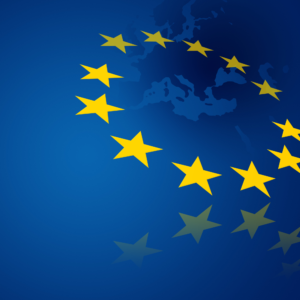EU Waste Regulation – Blazing a trail for circular consumer packaging?
Consumers don’t seem to be opposed to recyclates in packaging as long as the quality, functionality and price of the product is maintained. But how do companies remain competitive in view of added costs for high-quality recycling and the low price of virgin plastics? Michael Laermann tries to find the answer.
More and more packaging is made from post-consumer recycled waste. For packaged goods companies, the motivation to use secondary packaging material is driven by a shift in consumer awareness and a rapidly changing regulatory environment. The circular economy, including new waste and recycling laws, will be the number one priority of the new Commission’s upcoming “European Green Deal”, pushing for plastics packaging within the EU market to be designed with reuse or cost-effective recycling in mind.
Under the amended EU Packaging Waste Directive, PET bottles will need to contain at least 25% recycled plastic as from 2025. From 2030, the target will be 30% for any plastic bottle placed on the market.
In October, six of the world’s biggest users of packaging committed to increase the use of recycled plastic in packaging fivefold, going from an average 4% recyclate in 2018 to 22% in 2025. These combined efforts align with the trend that consumers are increasingly concerned about contributing to the plastic crisis. Fifty years after the introduction of the recycling symbol, they expect manufacturers to take action and help them consume in a more responsible manner by providing them more eco-friendly products.
Since the buying public perceives product and packaging more and more as an entity, they see it as contradictory – or even as an act of greenwashing – if a product that is declared to be sustainable comes over-packaged or in unsustainable packaging material. From this perspective, products with recycled packaging are considered in line with consumer expectations and part of the mainstream market rather than “green” niche. Sustainable packaging is no longer a choice for brands, but a corporate necessity.
The declared goal is to push companies use 10 million tonnes of recycled plastics in their packaging by 2025 – quadrupling the current demand. Meanwhile, in the UK, the government has proposed a tax on the production and import of plastic packaging with less than 30% recycled content as from April 2022.
While some companies are more compliance-driven, others take a lead with circular business models in hope of reaping the benefits of cost savings, increasing brand valorisation and – eventually – gaining in market share. For these pioneers and their customers, packaging must be circular. A tough challenge, considering the low market price of virgin plastics.
To facilitate the uptake of recyclates in packaging at competitive prices, the costs for recycled compared to virgin plastic would need to be brought down. The EU Circular Economy Action Plan adopted in 2015 has already led to concerted policy and regulatory efforts in support of more sustainable packaging.
The “Single-Use Plastics Directive” is only a beginning. Under the revised EU Packaging Waste Directive, stricter “Essential Requirements” for packaging products are currently in the making. The criteria for eco-design, green public procurement, and other relevant product legislation are equally under review.
A key regulatory incentive now being prepared by the European Commission are eco-modulated EPR (Extended Producer Responsibility) fees. Similar to a “bonus-malus” system, they would financially reward companies that put easily recyclable or recycled packaging onto the market: The higher the recyclability, the lower the fees, and the higher the competitiveness. Some EU Member States are also considering tax incentives.
Read the full and original story at Euractiv.com



